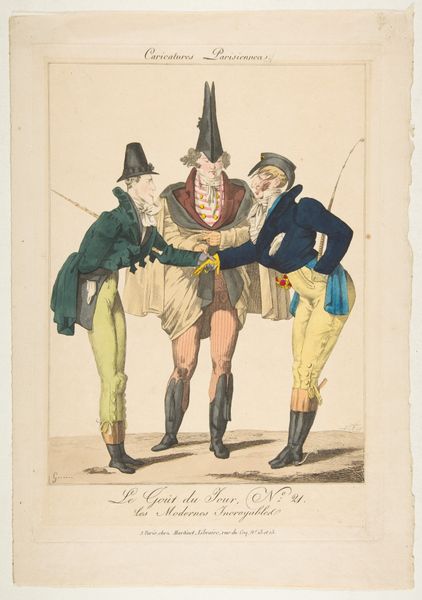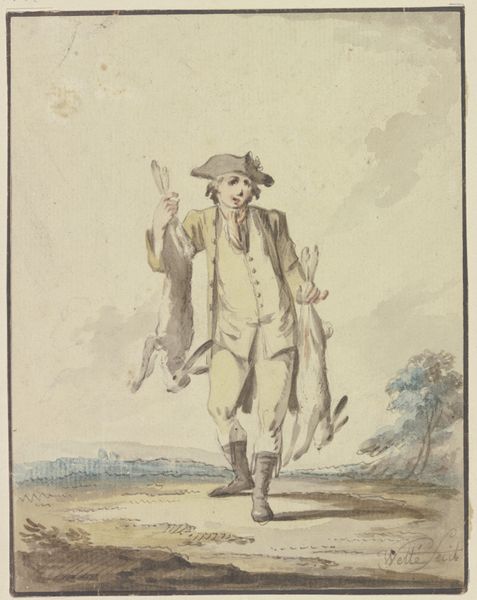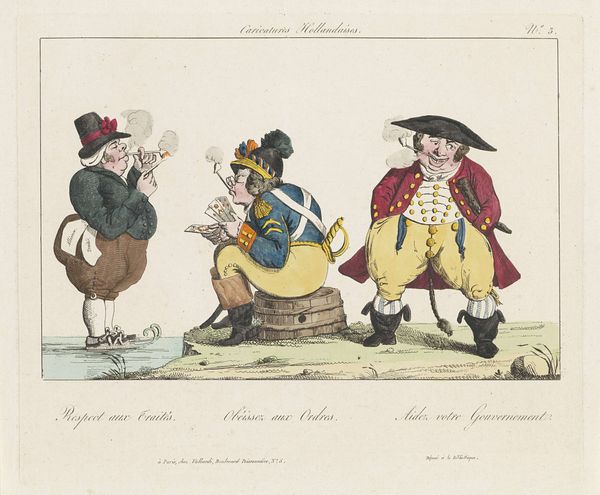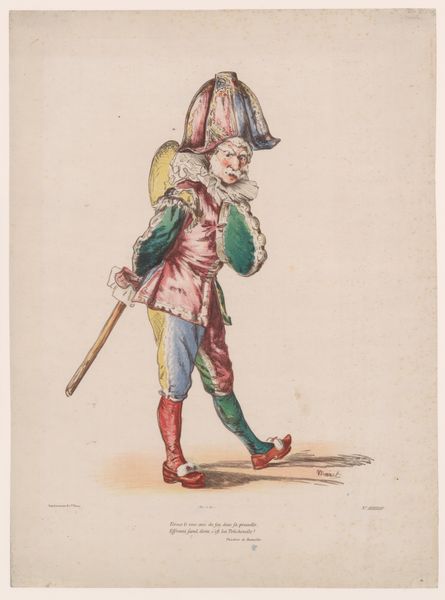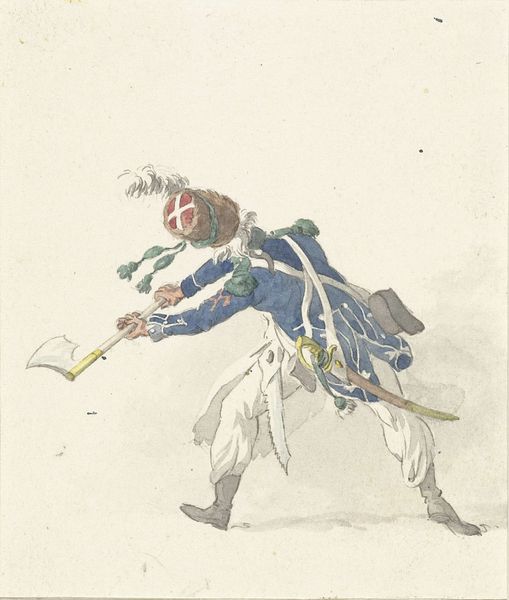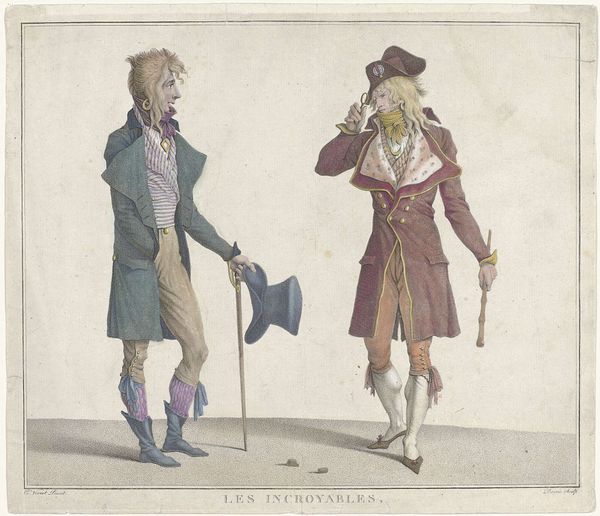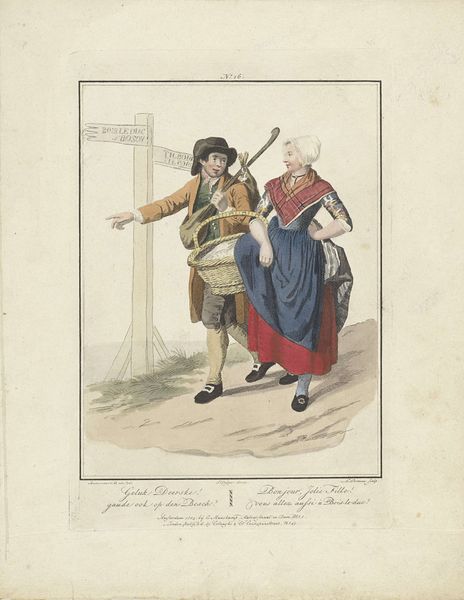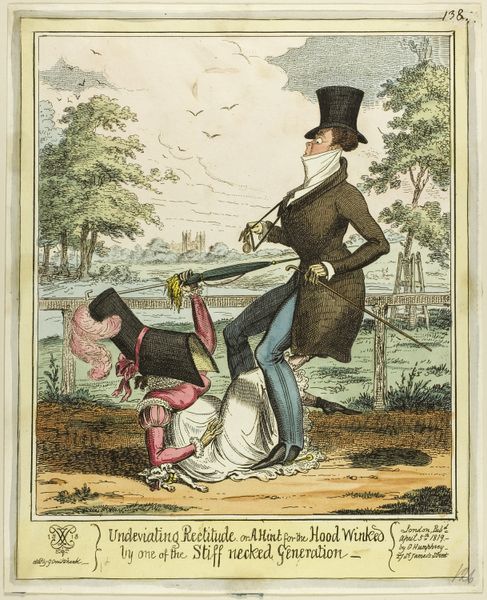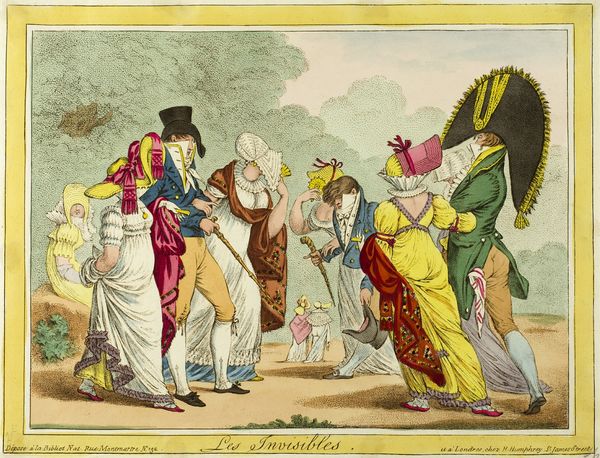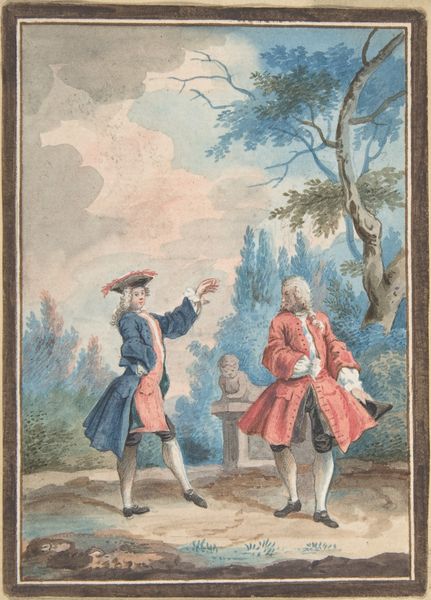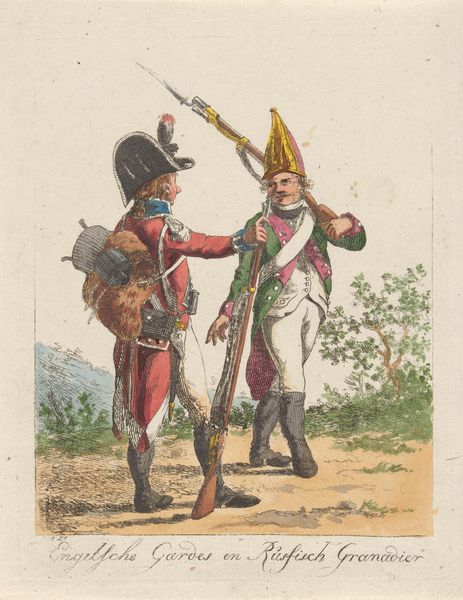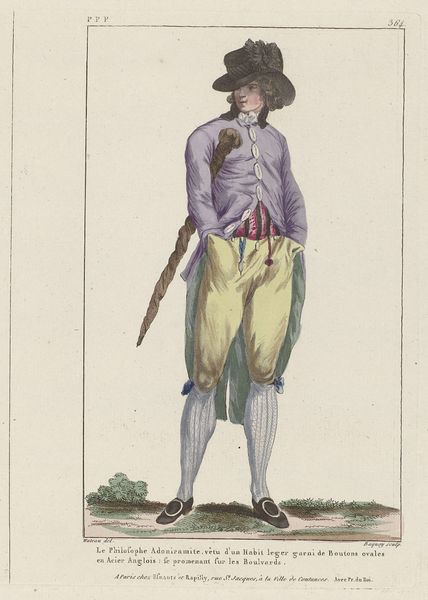
print, watercolor
# print
#
caricature
#
watercolor
#
england
#
romanticism
#
watercolour illustration
#
genre-painting
Dimensions: 11 1/4 x 8 1/4 in. (28.58 x 20.96 cm) (sheet)
Copyright: Public Domain
Curator: This watercolor illustration, simply titled "Parting," hails from the 18th or 19th century and presents a genre scene rendered in print form. The artist remains anonymous, which perhaps lends a universal quality to this snapshot of English social life. Editor: First glance? These fellas look like they are desperately trying to one-up each other with exaggerated enthusiasm. And their clothes—like a clown convention crashed a romantic picnic. Curator: Precisely! The Romantic style, characterized here by heightened emotion, intersects intriguingly with caricature, amplifying details for comic effect. Note the almost grotesque elongation of their faces. It pushes past mere representation. Editor: Yeah, look at the stripes on the trousers, the outrageous collars—the whole thing is theatrical. Their parting seems less about genuine farewell and more a competition for who can perform politeness better. Almost passive-aggressive. Curator: The watercolor technique allows for subtle gradations in color. Observe how these blend with crisp lines, especially in the depiction of their garments. This adds depth while preserving the work’s inherent graphic quality, a feature of its medium: printmaking. Editor: The sparse landscape adds to this feel. Barely-there trees in the background…it's like the real drama happens between them, this staged goodbye. Curator: The inscription adds an explicit textual element, solidifying the work as social commentary. "Well a...Good morning! Glad I See Ye well!," speaks of social niceties—revealing this performance's true focus on rigid and somewhat absurd societal expectations. Editor: The "God bless ye!" adds extra sweetness, even mock reverence, right? As if after outdoing the first impression, he has to layer in a heavy dose of piety as a closing argument to clinch victory. Curator: In conclusion, “Parting,” offers a small window onto a broader critique through its deliberate, formal, and theatrical construction and composition. It reveals the societal dance in Romantic-era England. Editor: Ultimately, the artist captures perfectly how even the simplest social rituals become battles fought on a field of awkward pleasantries and passive one-upmanship. "Parting," becomes ironically, the meeting point of subtle critique and riotous caricature.
Comments
No comments
Be the first to comment and join the conversation on the ultimate creative platform.
